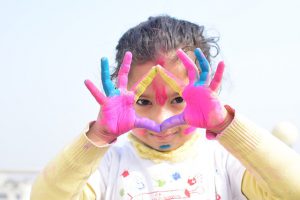“Education is what remains after one has forgotten what one has learned in school.” — Albert Einstein
Learning is always evolving; especially in the age of the Internet. It is now instant, online, self-driven and on the go. Probably a decade later down the lane, it would not matter how or where did you acquire knowledge. However, it would really matter what you have learned, and the proficiency in leveraging the relevant skills then.
What do the experts say about online education programmes?
In an increasingly global economy, governments worldwide slowly recognise a need to combat ignorance by investing in educational reform and new educational models for economic growth. India’s online education market is set to grow to USD 1.96 billion with about 9.9 million users by 2021, says KPMG in its 57-page exhaustive report titled ‘Online Education in India: 2021‘.
India’s techno-optimists believe that digital technology can help unleash world-changing transformations in the field of education. In fact, according to a survey conducted by AppyStore.in, a subscription-based digital learning platform for children, 58 per cent of Indian parents see digital space more as a learning tool and less as a cool new thing and believe that their kids can benefit from the Internet-based learning tools.
Is there a flip side?
With India undergoing an economic transformation, amidst dramatic demographic change and cultural upheavals, digital education is something that is yet to make an inroad in primary schools of rural India. On top of that, a shortage of teachers and an inability to hire, train, and retain skilled teachers compound the struggle furthermore.
Current state of Blended Learning

There is a trend towards modern classrooms in prominent cities trying to reap the benefits of having their old methods enhanced with the use of technology. This approach to learning is called Blended learning, where the educators focus on the pedagogical changes and practices of blended learning while teachers facilitate the personalisation of student learning.
This unique method of academia benefits student as it encourages students and creates an environment for them to stay connected and continue learning during their physical absence in the classroom. Teachers are also embracing this new classroom style as they witness a progression in student engagement.
How Blended Learning can help in “reinforcement” of Conventional and Experiential Learning?
Experiential learning is taking over from conventional ways of learning in our emerging world. At NumberNagar®, we have seen the following benefits out of Experiential Learning:
- Students are more engaged.
- They learn the concepts while having fun.
- Their 5C™ (Curiosity, Clarity, Connectivity, Communication, Competence) Quotient goes up multiple notches.
Now if we add the Blended Learning part of it, one important question arises in many parents’ minds – “Is tech going to replace conventional and experiential learning?”. The answer to this is a big NO.
Blended Learning is supposed to “reinforce” children’s learning by
- Finding out areas where they need to focus more
- Emphasising on complex concepts by means of media and immersive content
- Making children curious about the concepts so they can start discovering the hidden side of everything
- And connecting children to their immediate locality, city and to the global world so that their learning here could be connected to other children’s learning worldwide
Once the students learn how to learn using these methodologies, they never stop learning for the rest of their lives. Blended Learning, where experiential learning is combined with the reinforcement power of technology make the hive mind much coherent.

Blended Learning can continue to adopt new developments in AR, ML, AI, etc.; however, the principle behind it used in unison and in right mix with other methodologies, is the key challenge.
tl;dr
A right mix of technology in the form of Blended Learning, when combined with Experiential Learning, can result in a 360-degree development of kids.
Parimita Krishna
Latest posts by Parimita Krishna (see all)
- How Personalised Learning can make your kids curious? - 14 June 2019
- What’s new in CBSE and why Experiential Learning is even more relevant? - 31 May 2019
- The Curious Case of Homeschooling in India - 5 April 2019
- Making Maths fun for your kids - 8 March 2019
- Blended Learning: A Perspective on “Learning how to Learn” - 22 February 2019

